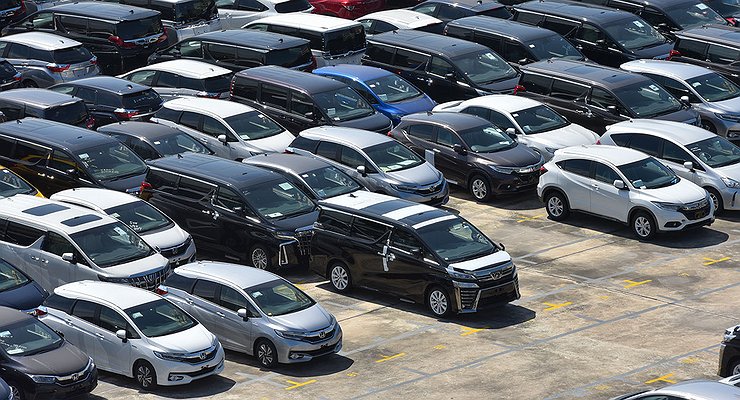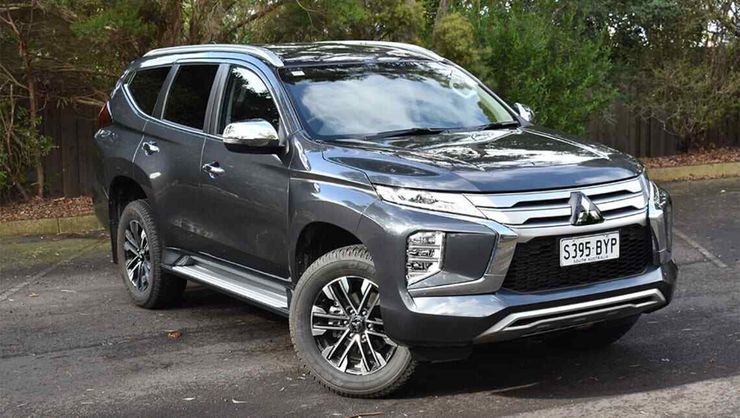Since the official representatives of car brands were forbidden to import and produce cars for Russians, someone else had to do it. This is how gray imports appeared, later called “parallel” imports, which no longer repelled the strategies or tactics of the manufacturers themselves, but carried exactly what the buyer wanted. And it turned out that the Russian motorist did not want the cars that they had sold us for years. For more information, see the AvtoVzglyad portal review.
A few years ago, when we did not yet know a special military operation or a pandemic, the Russian car market developed according to global “trends”: front-wheel drive crossovers with a large display, experiments with electric cars and many others , often strange, but global trends. Where we are and where the world is is another question.
Sales remained at a consistently low level, but this phenomenon was associated with the extreme impoverishment of the population, who were unable to purchase the desired new car due to low wages. And then happened the year 2022, when the Russians began to buy both Chinese crossovers for 5 million rubles and Zhiguli for 2.5 million. Did the money suddenly appear? Or where does such a furious demand and ensuing shortage come from?
The answer “it was not in the coil” is not accepted. So what is it? The answer to the conundrum lies in parallel imports, namely in those makes and models that won this unannounced “contest”.
There is the highest demand for three models and therefore the largest offer for parallel imports: Mitsubishi Pajero, bred by the Japanese in 2020 “as superfluous”, Mitsubishi Pajero Sport, which until recently seemed too expensive and controversial, and the perennial favorite of all Russia – Toyota Land Cruiser Prado. All three are delivered in moderate but steady batches from the UAE to official dealers, where they sell out quite quickly, according to the sellers.
Three off-road vehicles, each with an apartment, long outdated design, unpretentiousness and reliability. The lion’s share of delivery cars is equipped with large-volume gasoline engines: Pajero and Sport – three liters, Prado – 2.7 and 4-liter. All these “engines” are an example of sustainability from the 80s. Diesels are a drop in the ocean.
“What, there are no other cars in the Emirates?” – you may be wondering. Yes, there is quite a broad and saturated market. So why is it transported off-road “Japan”? And here everything is simple and superficial: all three models meet the requirement of a “universal car”, they are well-deserved and popular, understandable in maintenance and undemanding in content. It is certain of them that they will stand in our “rhythm” for at least five years and will not “cut” their owner as European cars do, and after that they will be sold profitably. Simply put, not an investment, but a saving.
The long steeplechase that has portrayed the Russian car market over the past 10-15 years has revealed two key aspects that Russian marketers have failed to pay attention to. First, Russia does not stop at Moscow, St. Petersburg and Krasnodar, where global trends can somehow still take root. Second, the product is important. Expensive? Let’s dig, not the first time. But paying too much for “useless, but fashionable” is really only possible in two capitals and a few million cities. Or rather, they could. Before.
A few years ago, when we did not yet know a special military operation or a pandemic, the Russian car market developed according to global “trends”: front-wheel drive crossovers with a large display, experiments with electric cars and many others , often strange, but global trends. Where we are and where the world is is another matter.
Sales remained at a consistently low level, but this phenomenon was associated with the extreme impoverishment of the population, who were unable to purchase the desired new car due to low wages. And then happened the year 2022, when the Russians began to buy both Chinese crossovers for 5 million rubles and Zhiguli for 2.5 million. Did the money suddenly appear? Or where does such a furious demand and ensuing shortage come from?
The answer “it was not in the coil” is not accepted. So what is it? The answer to the conundrum lies in parallel imports, namely in those makes and models that won this unannounced “contest”.
There is the highest demand for three models and therefore the largest offer for parallel imports: Mitsubishi Pajero, bred by the Japanese in 2020 “as superfluous”, Mitsubishi Pajero Sport, which until recently seemed too expensive and controversial, and the perennial favorite of all Russia – Toyota Land Cruiser Prado. All three are delivered in moderate but steady batches from the UAE to official dealers, where they sell out quite quickly, according to the sellers.
Three off-road vehicles, each with an apartment, long outdated design, unpretentiousness and reliability. The lion’s share of delivery cars is equipped with large-volume gasoline engines: Pajero and Sport – three liters, Prado – 2.7 and 4-liter. All these “engines” are an example of sustainability from the 80s. Diesels are a drop in the ocean.
“What, there are no other cars in the Emirates?” – you may be wondering. Yes, there is quite a broad and saturated market. So why is it transported off-road “Japan”? And here everything is simple and superficial: all three models meet the requirement of a “universal car”, they are well-deserved and popular, understandable in maintenance and undemanding in content. It is certain of them that they will stand in our “rhythm” for at least five years and will not “cut” their owner as European cars do, and after that they will be sold profitably. Simply put, not an investment, but a saving.
The long steeplechase that has portrayed the Russian car market over the past 10-15 years has revealed two key aspects that Russian marketers have failed to pay attention to. First, Russia does not stop at Moscow, St. Petersburg and Krasnodar, where global trends can somehow still take root. Second, the product is important. Expensive? Let’s dig, not the first time. But paying too much for “useless, but fashionable” is really only possible in two capitals and a few million cities. Or rather, they could. Before.
Source: Avto Vzglyad
I’m Sandra Torres, a passionate journalist and content creator. My specialty lies in covering the latest gadgets, trends and tech news for Div Bracket. With over 5 years of experience as a professional writer, I have built up an impressive portfolio of published works that showcase my expertise in this field.















